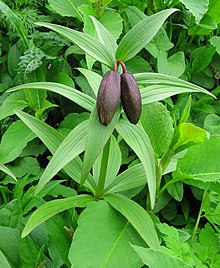Juicing provides a way for you to consume many of the nutrients in fruits and vegetables even if you have difficulty eating several servings of whole produce daily. Carrot juice contains several essential nutrients, providing a rich source of antioxidants, vitamins and minerals, as well as natural sugar that provides your body with energy. While drinking carrot juice does not cure diseases, like those that cause some types of chronic cough, nutrients in the juice can benefit your overall health and might help control the symptoms.

Vitamins in carrot juice might help control some types of chronic coughing.Photo Credit Stockbyte/Stockbyte/Getty Images
Asthma
Nutrients found in carrot juice might benefit those with a chronic cough due to asthma. During an asthma attach, the airways that allow air to move into your lungs become irritated and constricted, causing coughing and difficulty breathing. Both beta carotene -- a form of vitamin A -- and choline might aid in controlling asthma, according to the University of Maryland Medical Center. Drinking carrot juice provides a rich source of both nutrients, though the specific effect of carrot juice on asthma severity has not yet been fully investigated.
Carrot juice provides a source of nutrients that might also play a role in controlling pertussis, or whooping cough, a bacterial infection that leads to long-term severe coughing that proves especially harmful for children. The University of Maryland Medical Center recommends that individuals with whooping cough consume a range of nutrients, especially vitamin C and beta carotene. Carrot juice can modestly increase your vitamin C consumption, and provides a rich source of vitamin A to help your body fight against the bacterial infection.
Preventing Respiratory Issues
Drinking carrot juice might benefit the health of your respiratory tract, even if you do not currently have a chronic cough. A study published in "Respiratory Research" in 2005 found that vitamin A deficiency in rats contributed to bronchial reactivity, a factor that contributes to chronic obstructive pulmonary disease and chronic coughing. Though studies conducted in humans are required to draw definitive conclusions regarding the role of vitamins in preventing chronic coughing, drinking carrot juice can prevent the vitamin A deficiency that might negatively affect your airways.
Considerations
If you have a chronic cough, you must seek medical attention to both diagnose the underlying health issue and learn how to control your symptoms. While carrot juice might benefit your respiratory health and might play a role in controlling some diseases that cause chronic coughing, it does not serve as a treatment for chronic cough. If you're interested in alternative treatments to help control your coughing, talk to your physician -- she can recommend lifestyle and dietary choices that might complement any traditional medical treatments you require.
www.livestrong.com





